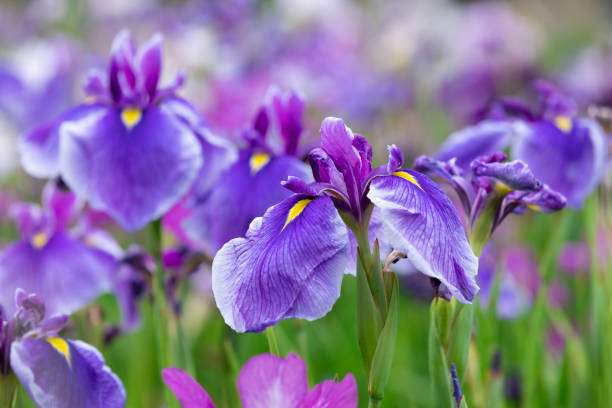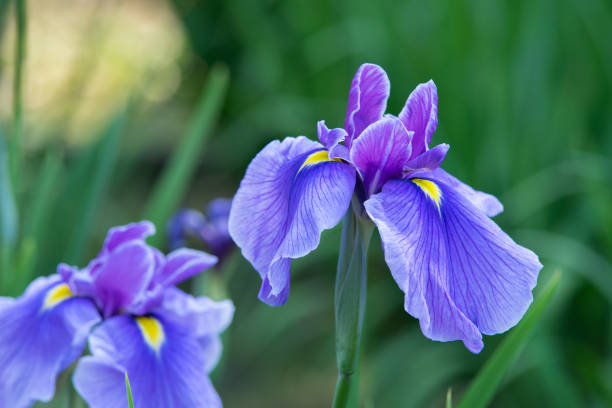Is Iris Perennial?
This early-blooming perennial is one of the easiest in the garden. Most of the more than 300 species found in the world are hardy in the United States and are well-adapted to a wide range of soil and light conditions. Combining different types of irises allows you to enjoy blooms throughout the spring and summer months. Also, late summer and early fall blooming bearded irises are a nice addition.
Iris blooms come in colors like pink and blue and lilac and purple, to brown, yellow, orange, and almost black, and they also come in white. There aren’t any true reds. Short or tall, the foliage on most kinds of the iris is very good. This is good because the flowers bloom for only a short amount of time. These plants stay the same every year. Irises usually have two rows of leaves at the base, which can be linear or sword-shaped. They can come from a thick rootstock, fibrous roots, or even a flower bulb.

Table of Contents
Dwarf Irises as Perennials
They’re among the first spring bulbs to bloom, and they’re also perennial. Ideally, they should be planted in a sunny, well-drained location to help them become self-sustaining. Dwarf irises can be planted in clumps in beds and borders or in drifts under trees. They will eventually form a natural-looking clump. Remove the bright blue flowers with butterfly-like markings once they’ve faded away. During the summer, the foliage will continue to grow. For a stunning display next season, lift the bulbs and divide them before replanting if the plants stop blooming.
Perennial Dutch Irises
Dutch irises will also grow and bloom again next spring. Others prefer to treat them as annuals and plant new bulbs every fall. If the iris plants are happy in an area that is well-drained and in the sun, they can bloom for a long time. During the summer, the foliage will grow and provide food for next year’s blooms. Remove the blooms as soon as they fade, and the foliage will keep growing. Trim back dead leaves and stems in the fall, and you’ll get more blooms next year.
Irises Inside Pots
There are many reasons why an iris that is grown in a pot is less likely to bloom the following year than if it were planted in the garden. After they’ve bloomed, it’s best to toss them out and replace them with new bulbs in the fall.
As a result of this information, we hope you’ll be motivated to plant irises in your spring garden. In our iris collection, you’ll find popular favorites from our customers as well as some unusual newcomers.

When is the Bloom Time?
The majority of irises bloom in the spring and summer months, respectively. When it comes to flowering, dwarf and medium-sized varieties flower first, followed by taller bearded varieties later in the spring and into the summer. Summer and fall blooms are common in reblooming varieties.
Types of Irises
Rhizomatous iris and bulbous iris are the two main types of iris. Bulbous irises bloom in late spring, while rhizomatous irises flower in the summer:
Rhizomatous Irises
These irises are classified into three types and are grown from rhizomes (a type of bulb):
Bearded: Most popular bearded irises have a prominent “beard” of white or colored hairs in the center of each fall, which gives them their name (outer surrounding petals). There are a lot of different types to choose from, many of which have a lot of flowers on each stem.
Beardless: Siberian, Japanese, Pacific Coast, and Louisiana beardless irises all have smooth falls and no beards. Siberian irises are a good option for low-maintenance mixed borders because of their adaptability. The Pacific Coast varieties do better in milder climates with winter rain and drier summers than the Japanese and Louisiana varieties do in moist to wet soils.
Bulbous Irises:
Irises with smaller reticulated or dwarf irises are included in this category. After the blooming season, they all lose their leaves and go into hibernation for the summer. Dutch hybrids bloom earlier than the tall bearded rhizomatous varieties and are the most commonly used spring bouquet variety. In order to avoid overcrowding, reticulated irises do best when grown in groups of two or three. Additionally, they can be used in rock gardens and pots for propagation.
